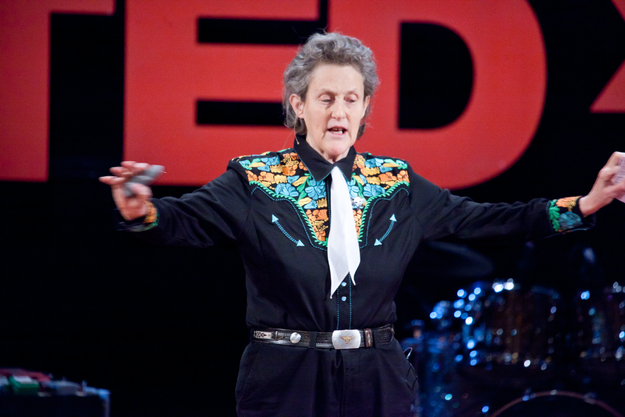Grandin’s profession is focused on studying the behaviors of livestocks and working with the livestock industry to improve the way animals are treated in the farm. Before she made her way to her career, she was confronted with her “specialness”. At the age of two, she was diagnosed of having “brain damage”, a statement that was dismissed in 2010 when she was already 63. She couldn’t speak until she was more than three, and she was excluded in school because of her “nerdy” behaviors. She was not formally diagnosed as autistic until adulthood, but her mother informed herself of the subject, was aware of the autistic traits in her, and tried to provide as much support as possible.
However, when presenting the highlights of her works, Grandin does not intend at all to separate what she has achieved in her career from her autism. On the contrary, she sees autism as a built-in part of her that shapes her perception, inspires her unique insights, and makes her stand out as an animal behaviorist. “Visual thinking has been a huge asset in my career designing livestock facilities.” Her sensitivity to visual information and her way of thinking in pictures allow her to spot problems in the existing livestock facilities, and she is able to examine how the equipment functions as a whole in her mind as put in “a virtual reality computing system”. She found out that animals are also sensory-based thinkers and it helps her to understand animal minds better. When presenting her design to the stakeholders, she is aware that she is selling her work instead of herself, and she uses her visualization skills to illustrate perfectly how things work, which helped her again in implementing her design to animal farms nowadays.
By observing her own practice and interviewing people about how they do their thinking, she writes a book Thinking in Pictures (1995) to share her theory. Bottom-up thinking, for example, is another trait of a visual thinker, who sees things most people miss and puts the pieces of information together like puzzles. Grandin also points out that autism is a continuum of traits, and being autistic does not necessarily mean being a visual thinker. Some could be more sensitive to sounds, other to verbal language, etc., but “the autistic mind tends to be a specialist mind”. More importantly, “The world needs different kinds of minds to work together.”
Grandin expresses that she was lucky to receive support from her mentor Wiliam Carlock, a NASA scientist but also her teacher at boarding school. She talked about how Carlock has inspired her interest in science, and calls for more support from the educational system to help different minds shine. Even though Grandin has privilege in her upbringing, it holds true that innovations and great changes of our time should not only happen in institutions or elite social bubbles but to the wider public and to the future generations. We need to make the world a more caring place for all minds.
Neurologist Oliver Sacks has said that Grandin’s practice is “a bridge between our world and hers, and allows us to glimpse into a quite other sort of mind”. In a time when autism was highly stigmatized in American society and the autistics were rejected in social scenarios, Temple Grandin is one of the first autistic people to be outspoken about her neurological condition. She shared publicly and affirmatively her insight on the subject from a first-person perspective, which has been inspiring the generations ever since to fight for their social visibility and to have more self advocacy.
Do you know that the A/Artist project organized a book club on Temple Grandin's latest book Visual Thinking? Check the documentation of our discussion and our critical voices :)
Reference
Temple Grandin on TED: https://www.ted.com/talks/temple_grandin_the_world_needs_all_kinds_of_minds?language=en
Grandin, T. (1995). Thinking in Pictures and Other Reports from My Life with Autism (2nd ed.). Vintage Books.
